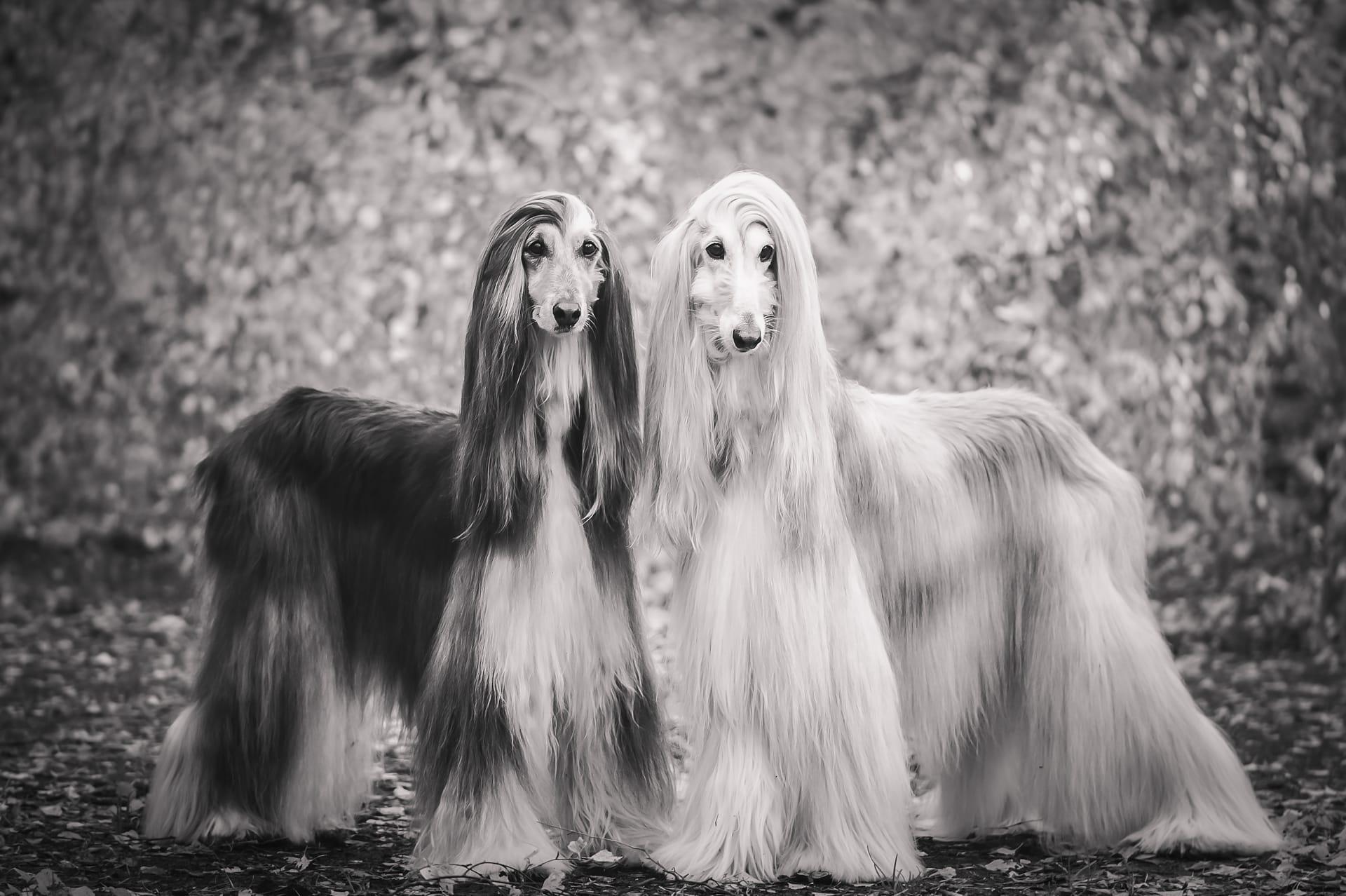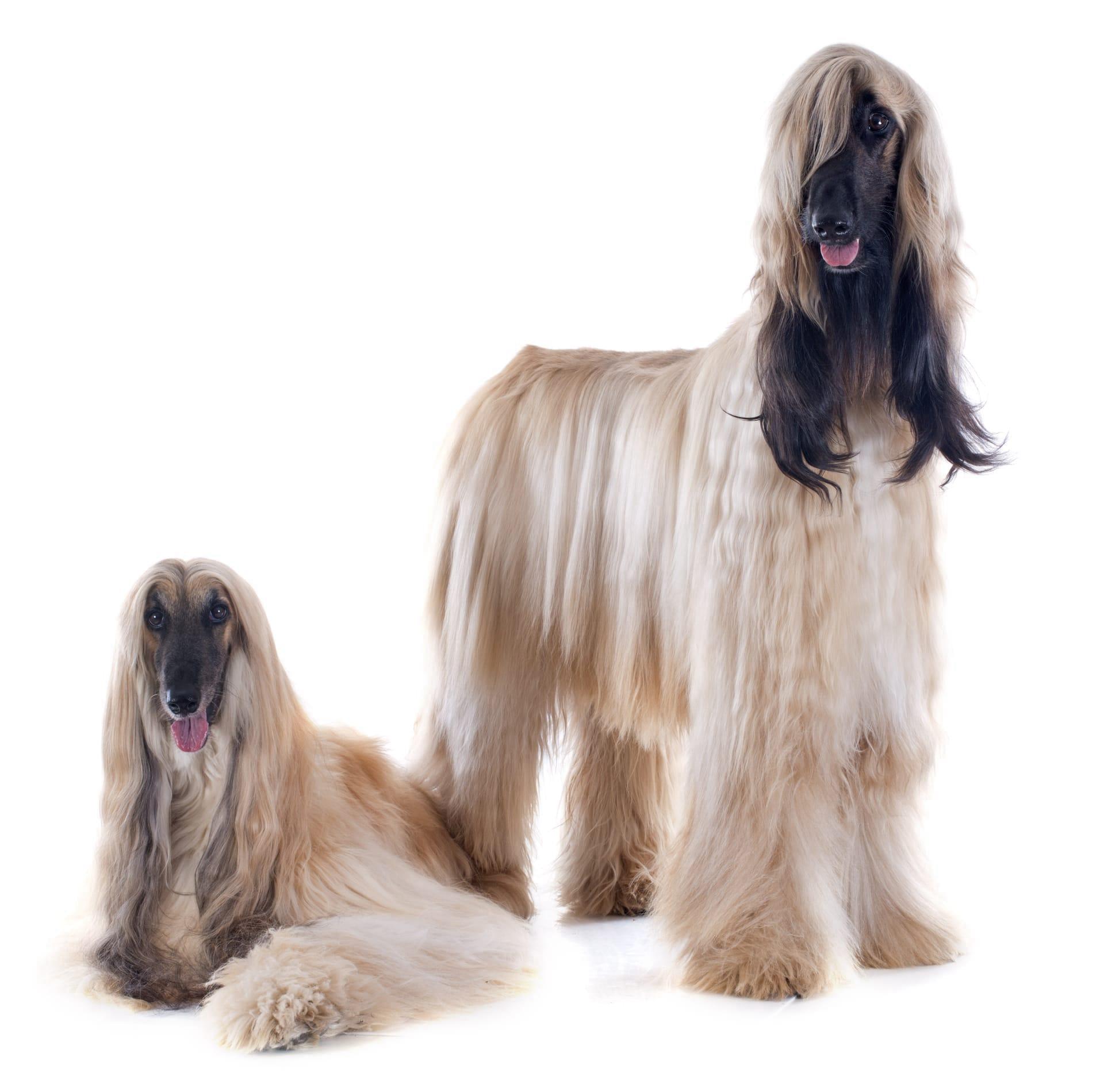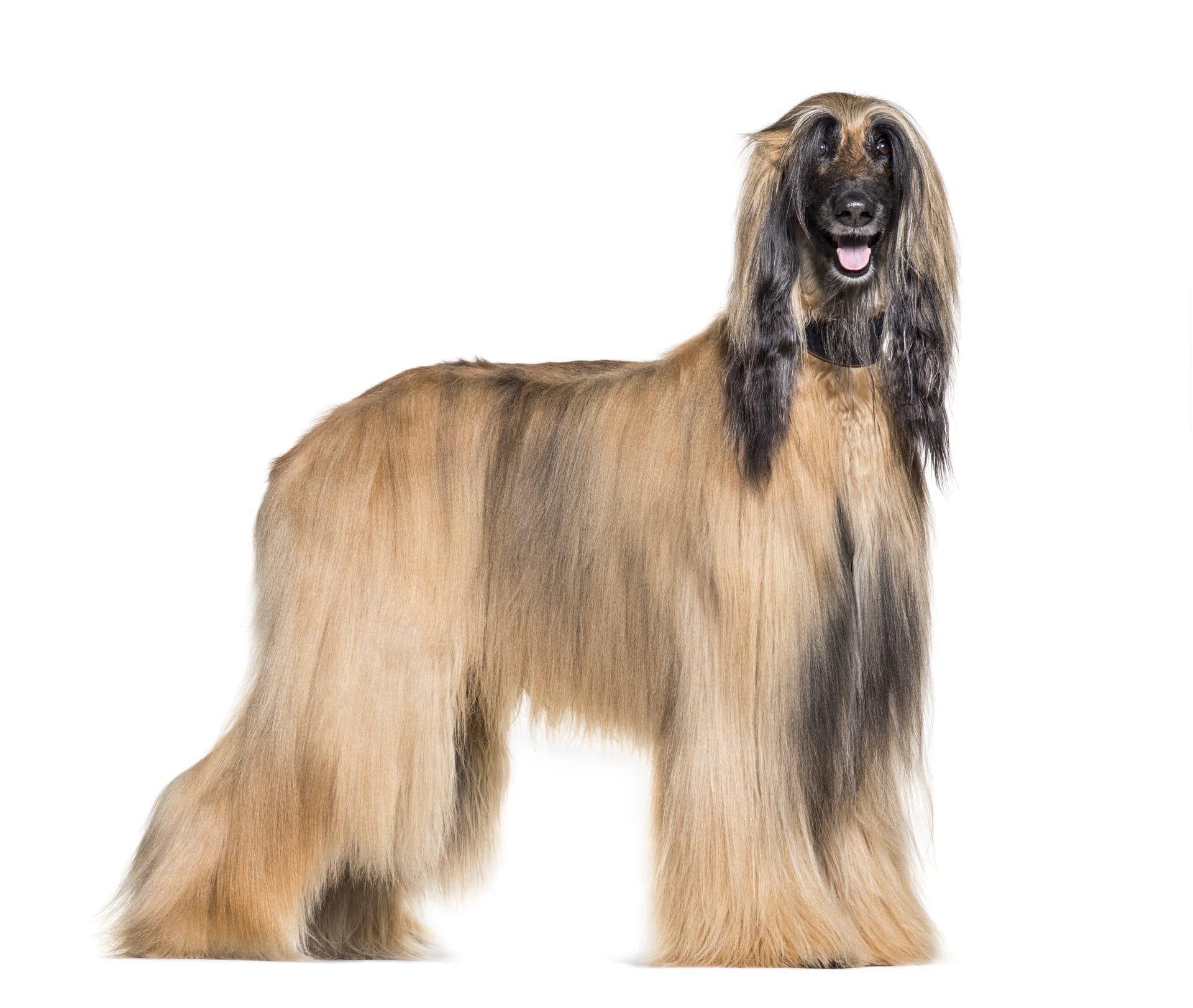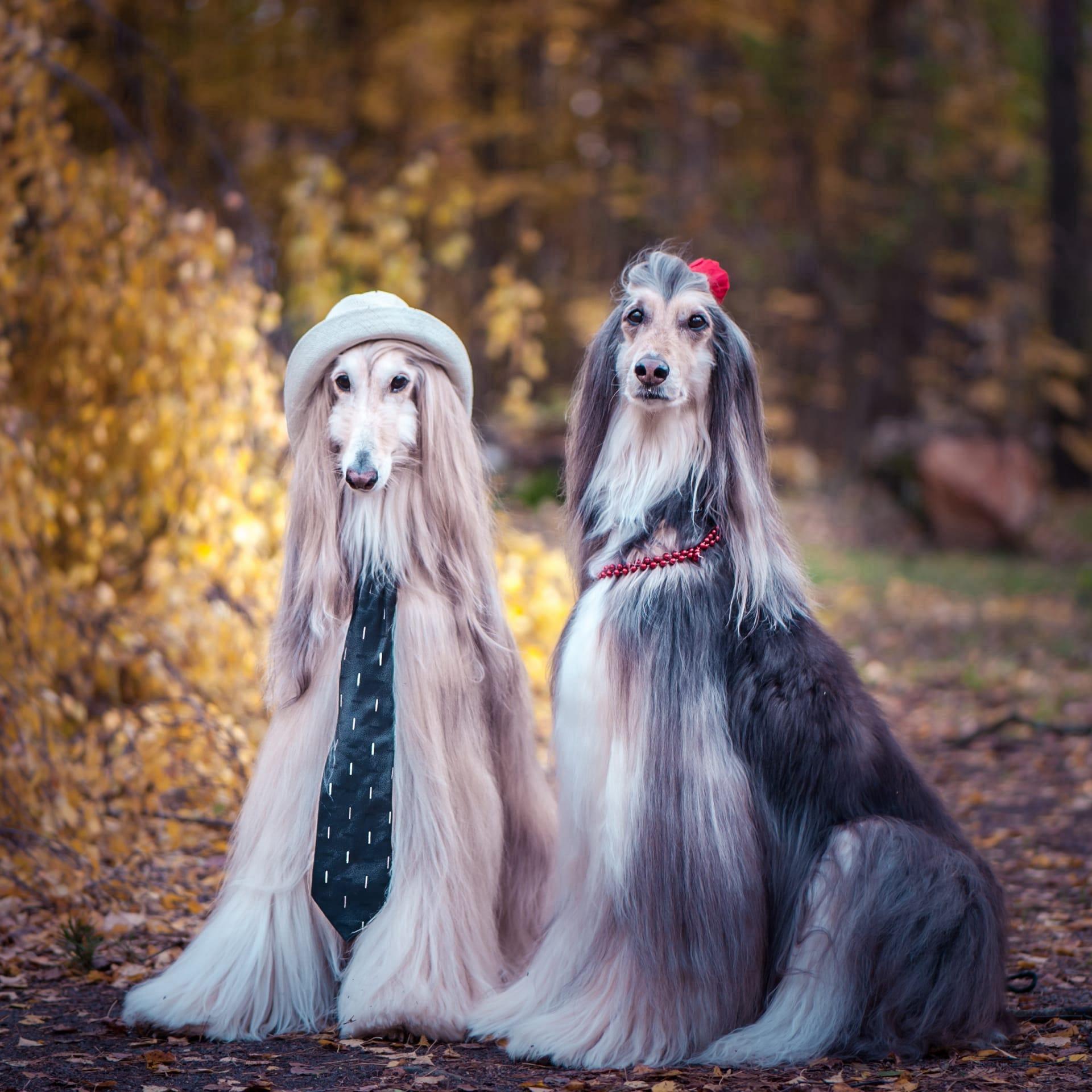Afghan Hound Characteristics
- Home /
- Mini Encyclopedia /
- Animal /
- Afghan Hound Characteristics
1
The Afghan Hound, an emblem of elegance in the canine world, stands out with its aristocratic bearing, tall and slender frame, and a unique, silky coat that can reach impressive lengths. Adult males typically stand between 27 to 29 inches at the shoulder, with females slightly smaller, ensuring a dignified presence. This breed's weight ranges from 50 to 60 pounds, reflecting their lean muscle structure. The Afghan Hound's life expectancy falls between 12 to 14 years, a testament to their robust health and endurance developed over centuries in harsh terrains.
The most distinctive organ of the Afghan Hound is undoubtedly its long, flowing coat. This magnificent fur isn't just for show; it served a crucial role in the harsh climates of Afghanistan, their country of origin. The coat provides insulation against both the intense heat and the severe cold, a natural adaptation to the extreme weather conditions of mountainous regions. The hair is fine and silky, covering the entire body, including a dramatic facial hair feature known as the "topknot." This coat requires regular grooming to maintain its iconic appearance and health.

2
Question: What is the most challenging aspect of caring for an Afghan Hound?
Answer: The most challenging aspect of caring for an Afghan Hound is undoubtedly maintaining its luxurious coat. The coat's length and silkiness mean it's prone to tangling and matting if not regularly groomed. Owners must dedicate time for daily brushing to keep the coat smooth and free of debris. Additionally, the Afghan Hound's coat requires professional grooming to trim and shape the fur, ensuring the dog's comfort and health. This high maintenance need is balanced by the breed's minimal shedding, making them a stunning, albeit time-intensive, companion.

3
The Afghan Hound boasts a remarkable combination of speed and agility, traits honed by its history as a sighthound in rugged terrains. This breed is known for its impressive burst of speed, capable of reaching up to 40 miles per hour, coupled with an elegant, springy gait that allows for swift, fluid movements. Their exercise needs are substantial, requiring ample space for running and regular, vigorous activity to satisfy their natural instincts and maintain their physical and mental well-being.
When it comes to feeding, the Afghan Hound has a relatively modest appetite compared to its size, but it's crucial to provide a balanced diet rich in nutrients. High-quality dry kibble, supplemented with lean proteins and occasional vegetables, supports their energy levels and coat health. It's important to monitor their food intake and maintain a consistent feeding schedule to prevent overeating, as their slender build can be susceptible to weight gain, which can put undue stress on their joints.

4
The Afghan Hound originally thrived in the mountainous regions of Afghanistan, where its physical and behavioral traits were shaped by the demanding environment. This breed is well-adapted to both extreme cold and heat, thanks to its distinctive coat. Their natural habitat demanded a high level of independence and problem-solving ability, traits that are still evident in the breed's personality. Modern Afghan Hounds can adapt to various living conditions, but they thrive in environments where they have space to roam and explore.
Reproduction in Afghan Hounds is characterized by their selective breeding history, which has aimed to preserve their elegance and physical prowess. Litters typically range from 6 to 8 puppies, requiring careful nurturing to ensure their health and development. The breed's maternal instincts are strong, with mothers displaying protective and nurturing behaviors towards their offspring. Early socialization and gentle training are crucial for puppies to grow into well-adjusted adults, embodying the breed's noble and affectionate nature.

5
Book: "The Complete Guide to Afghan Hounds" - This comprehensive guide, published in the United States in the early 21st century by renowned dog expert and author Linda Kennedy, offers an in-depth look into the Afghan Hound breed. From their majestic appearance and complex grooming needs to their unique personality traits and exercise requirements, Kennedy's book serves as an essential resource for both prospective and current Afghan Hound owners. It also delves into the breed's history, from its origins in Afghanistan to its status as a cherished companion and show dog in the West.
Book: "Afghan Hound: A Noble Companion" - Authored by British canine historian Charles Parker in the late 20th century, this book explores the Afghan Hound's journey from the rugged landscapes of Afghanistan to the hearts of dog enthusiasts around the world. Parker provides a detailed account of the breed's development, highlighting its role as a hunting dog in its native land and its transition to a beloved pet and show dog. The book also offers practical advice on care, training, and understanding the Afghan Hound's distinctive temperament, making it a valuable resource for anyone captivated by this elegant breed.